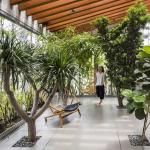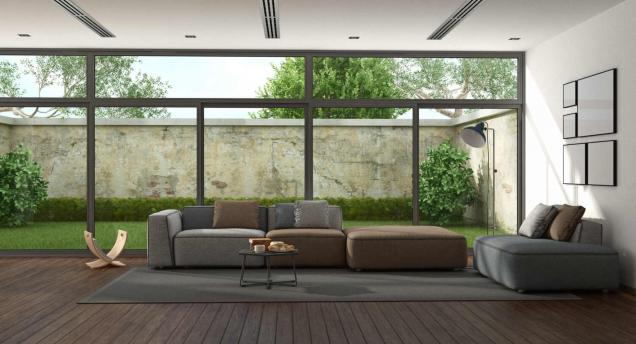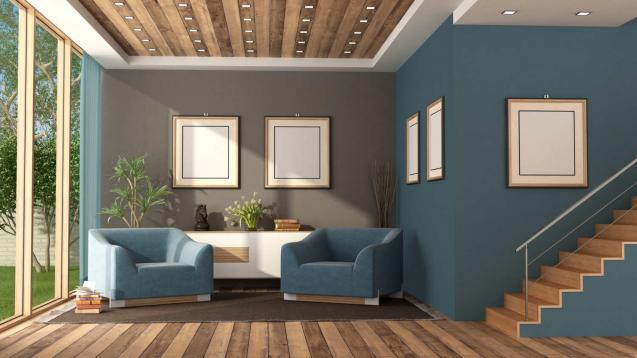
A Helpful Guide To Knowing All About Biophilic Design
Humans have an inherent inclination to live among nature that has increasingly been lost in the urbanised modern world.
The health benefits of spending time in nature are well known to all of us, but often that doesn’t fit into our daily lifestyle. Many of us spend the majority of our time in buildings or urban areas that lack any sort of resemblance to the natural world.
The increasing desire to get back to nature has led to the rise in popularity of biophilic design. Biophilic design incorporates nature into buildings and infrastructure, harnessing the environmental, economic and health benefits of nature inspired construction design.
Everywhere, builders and designers are looking to biophilic design to construct ‘Green Buildings’ that break the monotony of the urban landscape. Melbourne’s own metro tunnel is being constructed with biophilic design elements in mind.
Features Of Biophilic Design
There are various features typically found in biophilic design. Fundamentally, biophilic design contains these 7 elements:
Environmental Elements
Biophilic design typically involves the inclusion of natural environmental features. Placing the characteristics of the natural world, commonly recognised by humans, into the built environment is the essence of biophilic design itself.
Included in the holistic picture of environmental features is the presence of the colours of nature, natural light, air, plants and views of nature. These elements are regarded as a starter pack of sorts for an exceptional biophilic design.
Natural Forms
In line with incorporating nature, biophilic design aims to imitate and utilise natural forms of nature in building facades and interiors. These can be seen in the appearance of plant and tree-like features within buildings, that attempt to emulate the important role flora plays in the natural environment.
Natural Processes and Patterns
We as humans take our sensory cues from the natural processes that occur around us, and so adding these to our home environments will give us that mental satisfaction that comes with our ability to respond to nature.
Examples of this include the use of central ‘focal points’ (such as trees or tree-like structures) that give context to the biophilic design environment. Incorporating the aging process of change and eventual decay over time that we see in nature is also conducive to biophilic design.
Light
Natural light is a significant and essential part of a biophilic design. We are able to live on planet earth because of the light from the sun, so it goes without saying how important the sun is to us. Harnessing natural sunlight in biophilic design creates a warm, inviting space. Daylight’s effects can be enhanced through its modification, in particular to avoid the occurrence of glare.
Space
Biophilic design seeks to lay out and organise space in a way that is consistent with that commonly found in nature. In nature we are drawn more to open spaces, such as clearings within forests, so they should be an important consideration when building. Space also pertains to connecting with nature through outdoor hybrid ‘inside-outside’ areas such as an indoor garden, atriums and porches.
Facilitating Connection
As human beings, we all yearn for and need connection – both with other humans and with nature itself. Connection with the people and things within is what makes a home a home after all. Biophilic design seeks to cultivate environments for connections with people and nature to flourish.
Making You Feel Like You Are In Nature
By incorporating nature into modern design, the end outcome is to create the feelings and benefits a human achieves from being in nature itself.
The aim here is to mimic nature in such a way in your building that when you spend time in it, and the benefits that then come from that.
The Value Of Biophilic Design
The purpose biophilic design is to create a genuine and valuable relationship with nature. This has immense benefits to our health, wellbeing, and our impact on the environment.
Being in nature has been shown to decrease stress levels, and in turn reduces the effects of stress on our physical and mental health. It should come as no surprise that nature makes us healthier and calmer people when we spend more time in it. Making the indoor places where we spend the vast majority if not all of our time resemble nature will give us those benefits without having to quit our jobs, move to the wilderness and live off the grid!
The use of natural elements also has a profoundly positive impact on the environment and as we are in the midst of a man-made climate crisis brought about by a disconnection with our environment, biophilic design can go some way to reversing that damage.
Why Go Biophilic?
Along with the physical, and environmental benefits of biophilic design come the financial and psychological benefits too.
Studies done on businesses that operate in biophilic designed spaces have reported a much higher level of productivity as a result. Improved health of employees leads to reduction in absenteeism and mental fatigue, and an increase in mood and employee engagement.
Nature literally makes us who we are, and that shouldn’t be disregarded in today’s modern world.
Some Final Words
Though a recent phenomenon in Australia, biophilic design is trending fast and requires designers and builders to be creative and think about the real needs to homeowners more than ever before.
That’s why when considering biophilic design for your next build, you should look to bring in those with experience in their field. As sustainable builders in Melbourne Green Edge Builders we understand the shift towards biophilic design and it is at the core of what we do.
If you’d like efficient, sustainable and environmentally proactive designed homes, get in contact with our experts of biophilic building in Melbourne today and let’s work together to bring you back to nature!



